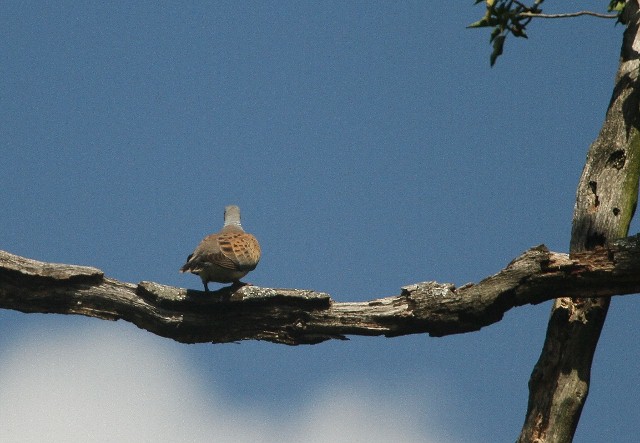Order: Columbiformes. Family: Columbidae
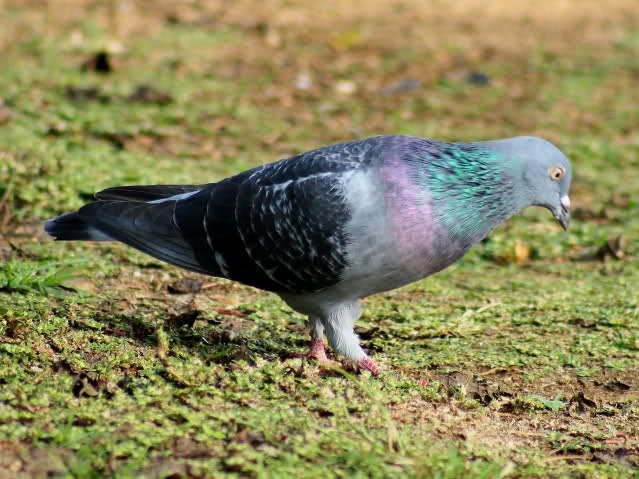
Description
33 cm. Feral; plumage is very variable, with black, blue, grey, white and reddish forms occurring and highly variable, most with 2 bold black bars on folded wing. Blue-grey birds usually have iridescent purple and green on upper breast and neck. Overall colours may vary from white to pure black. Legs and feet magenta. Sexes alike.
Juveniles are less iridescent.
Distribution
Originally native to south-eastern Europe, south-western Asia, India, Arabia, north Africa and British Isles but it is now common in many southern African cities, as well as other cities around the world.
Habitat
Mostly urban areas, city parks and industrial sites.
Diet
Mainly eats seeds, as well as discarded human food and plant matter. It typically forages on open ground, such as pavements, roads, lawns and bare soil.
Breeding
It builds its own nest, which is a scruffy collection of twigs, wire, feathers and other material, usually placed on ledges of buildings or bridges.
It can lay 1-2 eggs at any time of year. Incubation starts with the first laid egg, and is done by both sexes for 16-19 days.
Call
Typical domestic pigeon coo-roo-coo. Listen to Bird Call.
Status
Common and abundant resident.



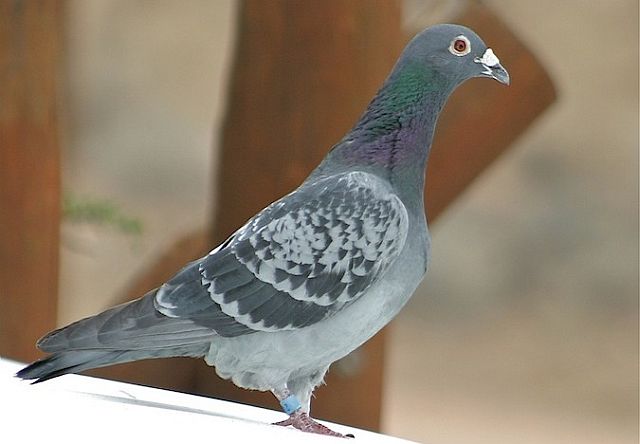 © ExFmem
© ExFmem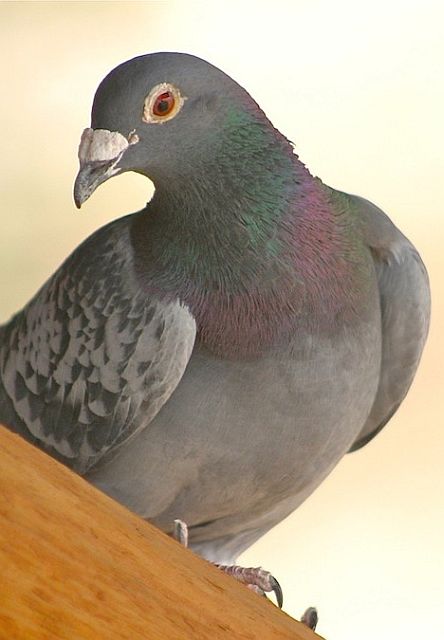 © ExFmem
© ExFmem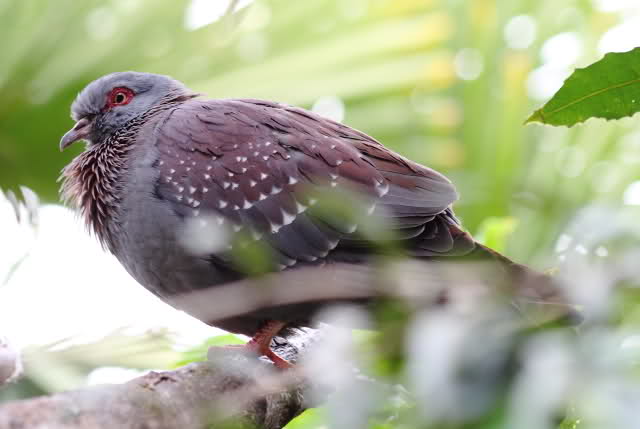
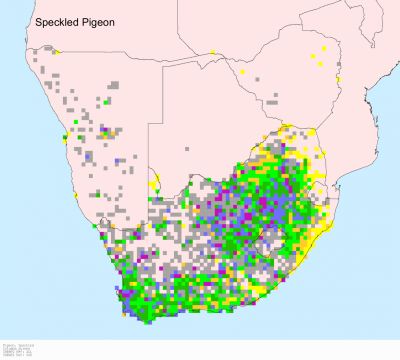
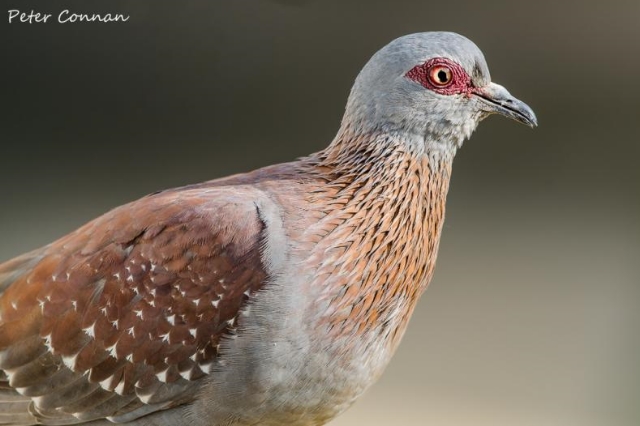 © Peter Connan
© Peter Connan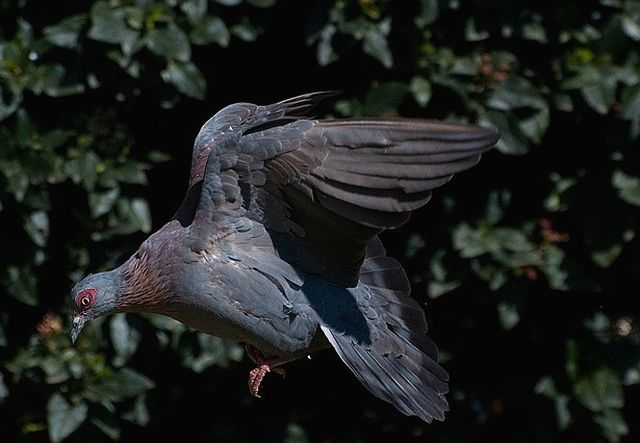 © steamtrainfan
© steamtrainfan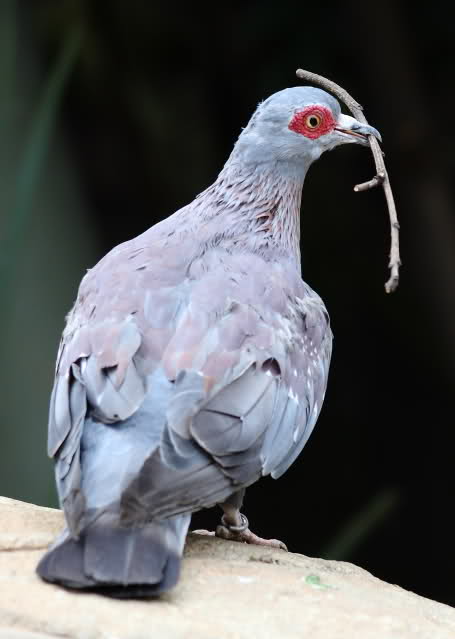 © Flutterby
© Flutterby
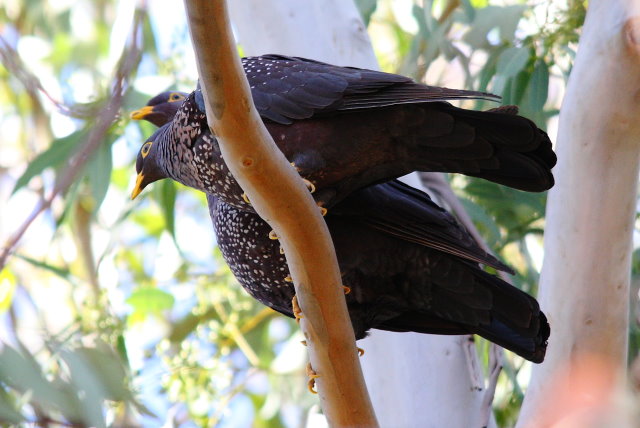
 © Sharifa
© Sharifa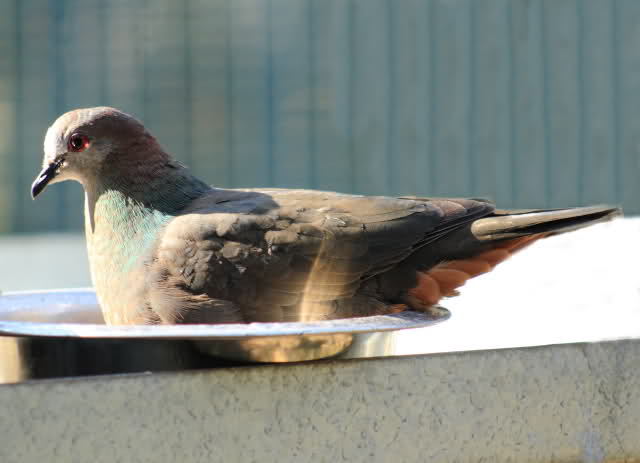
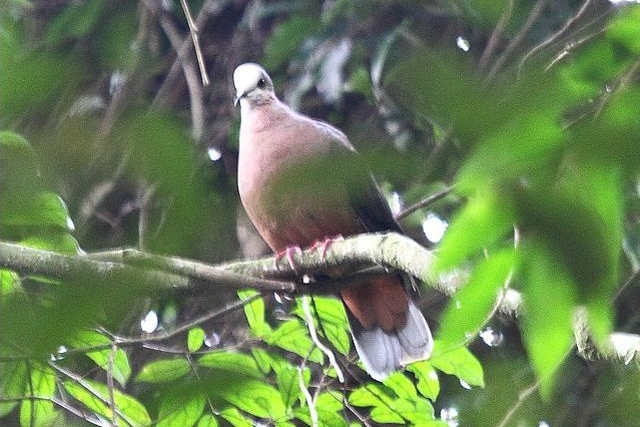 © Duke
© Duke
